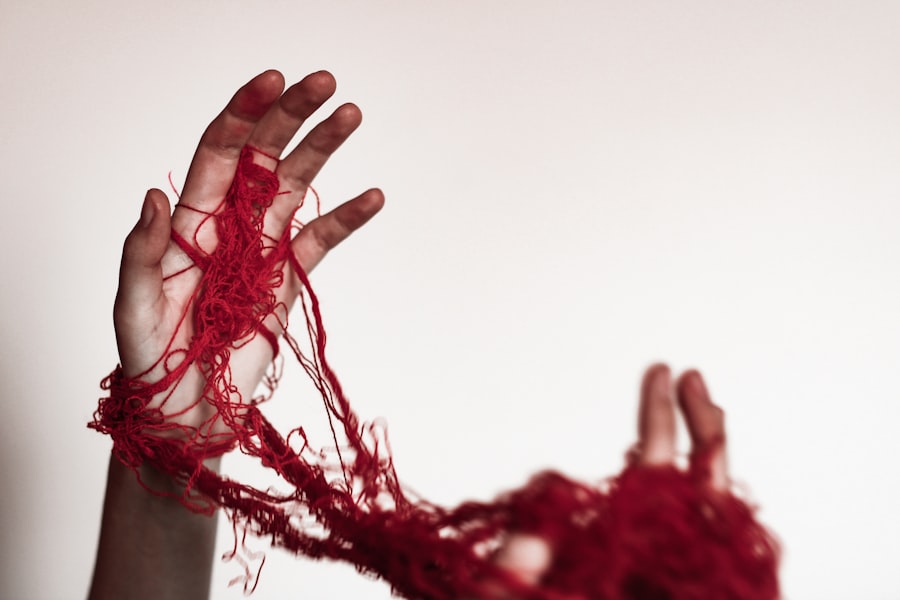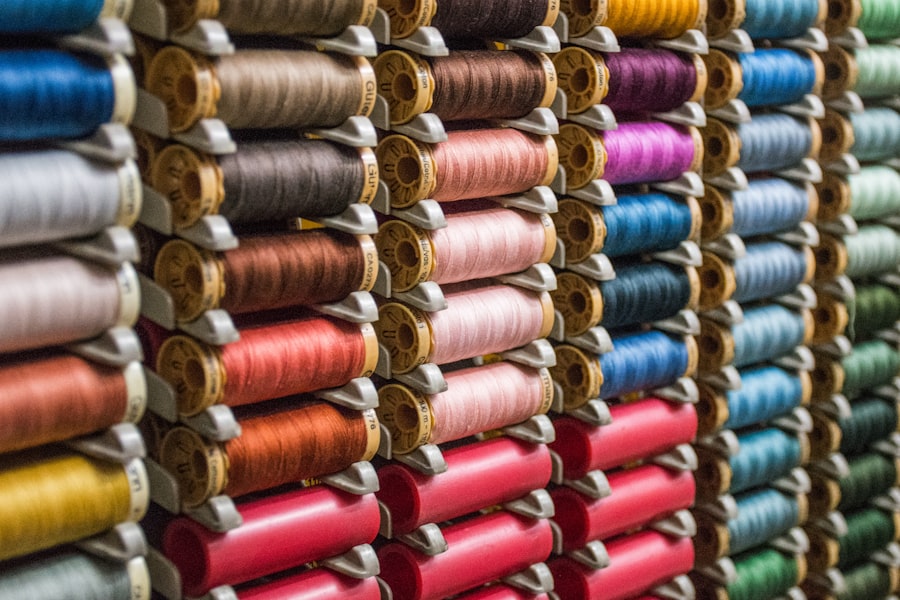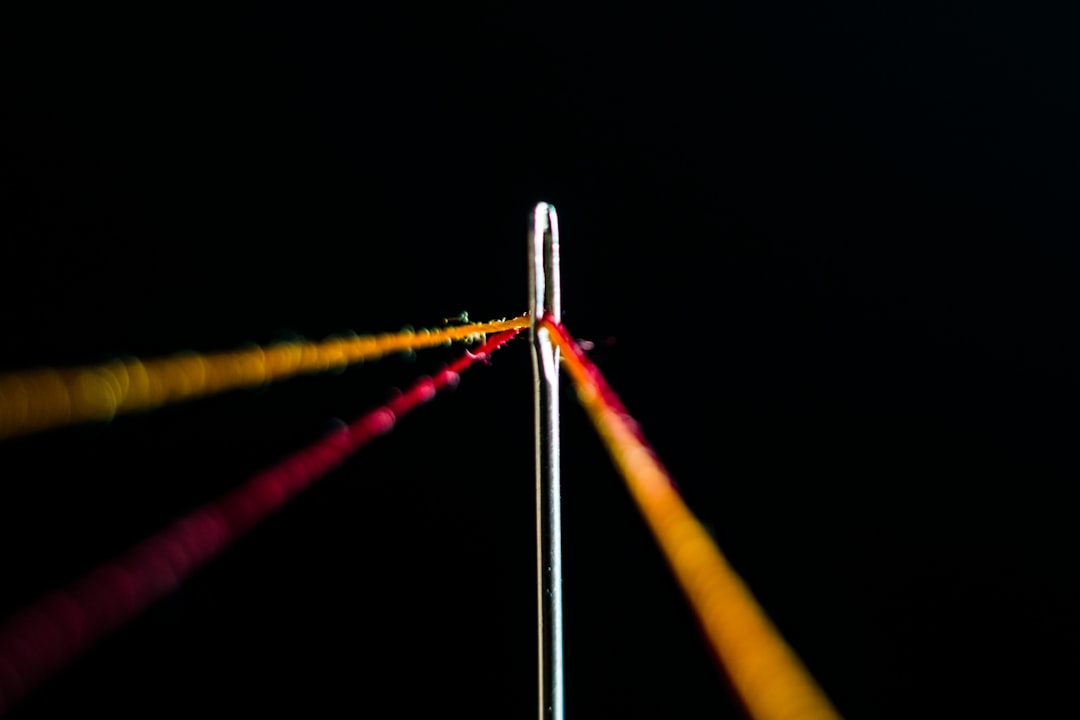The history of thread is a fascinating journey that traces back to the earliest civilizations. Archaeological evidence suggests that humans have been using threads made from natural fibers for tens of thousands of years. The oldest known threads, dating back to around 30,000 BCE, were made from plant fibers and animal sinews.
These primitive threads were essential for creating clothing, shelter, and tools, showcasing the ingenuity of early humans in utilizing available resources. As societies evolved, so did the methods of thread production. The advent of spinning techniques allowed for the creation of finer and more durable threads, which were crucial for the development of textiles.
As civilizations advanced, so did the complexity of thread-making techniques. The ancient Egyptians, for instance, developed sophisticated methods for spinning flax into linen thread, which became a staple in their textile production. Similarly, in China, silk thread emerged as a luxurious material, cultivated from silkworms and spun into fine strands.
The Silk Road facilitated the exchange of these threads and textiles across continents, influencing fashion and trade. By the Middle Ages, the production of thread had become an established craft in Europe, with guilds forming to regulate quality and techniques. The Industrial Revolution marked a significant turning point in thread production, introducing mechanized spinning and weaving processes that dramatically increased output and variety.
Today, modern innovations in synthetic fibers and advanced manufacturing techniques have transformed the thread industry, allowing for a vast array of options tailored to specific applications.
When it comes to thread, the choice between natural and synthetic fibers is fundamental and can significantly impact the final product’s quality and performance. Natural fibers, such as cotton, linen, wool, and silk, have been used for centuries due to their inherent properties. Cotton thread is particularly popular for its softness, breathability, and versatility, making it suitable for a wide range of sewing projects.
Linen thread, derived from the flax plant, is known for its strength and durability, often used in heavy-duty applications like upholstery and outdoor gear. Wool thread offers excellent insulation and elasticity, making it ideal for knitting and embroidery. On the other hand, synthetic fibers have gained prominence in recent decades due to their unique characteristics and advantages.
Polyester thread is one of the most widely used synthetic options; it is strong, resistant to shrinking and fading, and has excellent color retention. Nylon thread is another popular choice, known for its exceptional strength and elasticity, making it ideal for applications requiring durability, such as outdoor gear and heavy fabrics. Additionally, synthetic threads can be engineered to possess specific qualities such as water resistance or UV protection, catering to specialized needs in various industries.
The choice between natural and synthetic threads ultimately depends on the intended use, desired aesthetic, and performance requirements.
Key Takeaways
- Thread has been used since ancient times, with evidence of its use dating back to prehistoric eras.
- Natural fibers like cotton and silk have been used for centuries, while synthetic fibers like polyester and nylon are modern innovations.
- Thread weight and thickness are measured in various ways, including denier, tex, and weight in grams per 1000 meters.
- The color and dyeing techniques of thread are important for achieving desired aesthetic and functional qualities in the final product.
- Thread construction can be categorized as spun (short fibers twisted together) or filament (long continuous fibers), each with its own characteristics and uses.
- Thread is used in a wide range of applications, including sewing, embroidery, quilting, and more.
- Proper maintenance and care, such as storing thread away from sunlight and moisture, can extend its lifespan.
- Eco-friendly thread options, such as organic cotton and biodegradable polyester, are becoming increasingly popular for environmentally conscious consumers.
Understanding Thread Weight and Thickness: A Comparison of Thread Measurements
Thread weight and thickness are critical factors that influence the outcome of any sewing or crafting project. Thread weight is typically measured using a numbering system that indicates the thickness of the thread; the lower the number, the thicker the thread. For example, a size 10 thread is much thicker than a size 50 thread.
This measurement system can vary between different types of threads; for instance, cotton threads are often measured differently than polyester threads. Understanding these measurements is essential for selecting the appropriate thread for specific tasks. In practical terms, thicker threads are generally used for heavy fabrics or projects requiring strong seams, such as denim or canvas work.
Conversely, finer threads are ideal for delicate fabrics like silk or chiffon where a subtle finish is desired. Additionally, thread weight can affect the appearance of stitches; thicker threads create bolder seams while finer threads yield more intricate details. It’s also important to consider needle size when choosing thread weight; using a needle that is too small for a thick thread can lead to skipped stitches or damage to both the fabric and the thread itself.
Therefore, understanding thread weight and thickness not only enhances the quality of the finished product but also ensures that the sewing process runs smoothly.
The Importance of Thread Color and Dyeing Techniques

Color plays a pivotal role in textile design and can dramatically influence the aesthetic appeal of any project. The selection of thread color should complement the fabric and overall design vision. Threads come in an extensive palette ranging from vibrant hues to subtle pastels, allowing creators to express their artistic intentions effectively.
Moreover, color matching is crucial in sewing; mismatched colors can detract from the overall look of a garment or project. Dyeing techniques also significantly impact thread color quality and longevity. Natural dyeing methods have been used for centuries, utilizing plant-based materials to create rich colors with unique characteristics.
However, synthetic dyes have become more prevalent due to their ability to produce consistent colors that are often more vibrant and resistant to fading. Techniques such as tie-dyeing or batik can add texture and depth to threads, enhancing their visual appeal. Additionally, advancements in dyeing technology have led to eco-friendly options that minimize environmental impact while still achieving beautiful results.
Understanding these aspects of color and dyeing not only enriches the creative process but also ensures that finished products maintain their beauty over time.
The construction of thread significantly influences its performance characteristics and suitability for various applications. Spun threads are made by twisting together short lengths of fiber into a continuous strand. This method creates a textured surface that enhances grip when sewing but may also lead to fraying over time if not properly cared for. Spun threads are commonly used in general sewing applications due to their versatility and ease of use.
In contrast, filament threads are composed of long continuous strands of fiber that are either monofilament or multifilament. Monofilament threads consist of a single strand, providing exceptional strength and smoothness; they are often used in applications where invisibility is desired, such as hemming sheer fabrics or quilting delicate layers together. Multifilament threads are made up of multiple strands twisted together, offering a balance between strength and flexibility while maintaining a smooth finish. This construction makes them ideal for high-stress applications like upholstery or outdoor gear where durability is paramount. Understanding these differences in thread construction allows crafters to select the most appropriate type for their specific needs.
Thread Applications: Sewing, Embroidery, Quilting, and Beyond
| Thread Applications | Sewing | Embroidery | Quilting | Beyond |
|---|---|---|---|---|
| Strength | High | Medium | High | Varies |
| Thread Weight | Varies | Varies | Varies | Varies |
| Thread Type | Cotton, Polyester, etc. | Rayon, Metallic, etc. | Cotton, Polyester, etc. | Varies |
| Stitch Type | Straight, Zigzag, etc. | Satin, Fill, etc. | Straight, Free-motion, etc. | Varies |
Thread applications are vast and varied, reflecting the diverse needs of crafters across different disciplines. In sewing, thread serves as the backbone of garment construction; it holds fabric pieces together while allowing for movement and flexibility. Different types of sewing projects may require specific threads; for instance, lightweight cotton threads are ideal for delicate fabrics like silk or chiffon, while heavier polyester threads are better suited for denim or canvas.
Embroidery is another area where thread choice is critical. Embroidery threads come in various materials such as rayon or polyester and are designed to create decorative stitches on fabric surfaces. The sheen and texture of embroidery threads can enhance designs significantly; rayon threads offer a luxurious shine that elevates embroidered motifs while polyester threads provide durability against fading and wear over time.
Quilting represents yet another application where thread plays a vital role. Quilters often choose thicker threads to create bold seams that stand out against intricate patterns or designs. Additionally, specialty quilting threads may be used to achieve specific effects such as decorative topstitching or free-motion quilting techniques.
Beyond traditional sewing applications, threads are also utilized in crafts like macramé or weaving where they serve as structural elements in creating intricate designs. In industrial settings, specialized threads are employed in manufacturing processes ranging from automotive upholstery to medical textiles. The versatility of thread across these various applications underscores its importance in both everyday crafting and specialized industries.
Maintenance and Care Tips for Extending the Lifespan of Thread
Proper maintenance and care can significantly extend the lifespan of thread, ensuring that it remains functional and aesthetically pleasing over time. One essential tip is to store thread in a cool, dry place away from direct sunlight; exposure to heat and light can cause colors to fade and fibers to weaken over time. Using airtight containers or dedicated storage solutions can help protect threads from dust and moisture that may lead to deterioration.
Additionally, it’s important to handle thread carefully during sewing projects to prevent tangling or fraying at the ends. When threading a needle or winding bobbins, ensure that there is no excessive tension on the thread as this can lead to breakage or uneven stitching during use. Regularly checking for signs of wear—such as fraying or discoloration—can help identify when it’s time to replace a spool before it affects project quality.
Cleaning techniques also play a role in maintaining thread integrity; if a project becomes soiled or stained, it’s advisable to follow specific cleaning instructions based on fabric type rather than attempting aggressive cleaning methods that could damage both fabric and thread alike.
Eco-Friendly Thread Options: Sustainable and Biodegradable Alternatives

As environmental awareness grows among consumers and crafters alike, eco-friendly thread options have emerged as viable alternatives to traditional materials. Sustainable threads are often made from organic fibers such as cotton or linen that are cultivated without harmful pesticides or chemicals. These organic options not only reduce environmental impact but also promote healthier practices within textile production.
For instance, some manufacturers produce biodegradable polyester made from recycled materials that maintain durability while minimizing waste in landfills. Additionally, companies are exploring innovative materials derived from renewable resources such as bamboo or hemp fibers which offer both strength and sustainability benefits compared to conventional synthetic options.
By choosing eco-friendly threads crafted with sustainable practices in mind, crafters can contribute positively towards reducing their environmental footprint while still achieving high-quality results in their projects. This shift towards sustainability reflects a growing trend within the crafting community that values both creativity and responsibility towards our planet’s future.
In the realm of online discussions and forums, the concept of a “thread” is pivotal, as it allows for organized and coherent conversations on various topics.
For instance, phenomenology, a branch of philosophy that delves into the structures of experience and consciousness, often involves threading together complex ideas and perspectives. An article that explores the foundational aspects of phenomenology, focusing on key figures like Husserl and Kierkegaard, can provide deeper insights into how these philosophical threads are woven. For more on this topic, you can read the article titled “Exploring the Basics and Key Figures of Phenomenology: Husserl and Kierkegaard” by following this link.





















+ There are no comments
Add yours